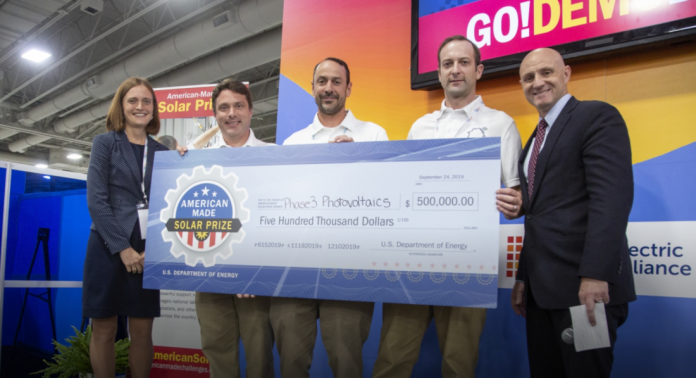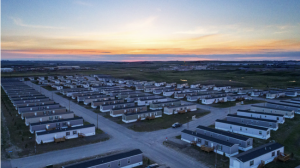
Company Proposes Solar Energy Technology as New Revenue Stream for Manufactured Home Builders
A Portland-based solar energy company is helping to increase access to manufactured home solar energy as part of the factory assembly process.
The company, Phase3 Photovoltaics, believes that if manufactured home builders integrate solar into their product lines, it could create new revenue streams and increase margins.
“We offer a full end-to-end solution. From designs and materials procurement to delivery and training of factory personnel on assembly, to permitting and warranty training after the sale – we’re creating solutions that are truly comprehensive,” says Ethan Good, co-founder of Phase3.
Phase3 Photovoltaics’ Manufactured Home Solar Energy Innovations Gain National Attention

The company’s solar panel concept recently gained attention by winning the first round of the American Made Solar Prize. The award, given by the U.S. Department of Energy, includes a $500,000 cash prize and $75,000 in vouchers for DOE’s National Laboratories.
Good says the funding and attention sparked by the award have helped accelerate his company’s development and readiness to grow in the market.
The American Made Solar Prize is a year-long, $3 million competition designed to stimulate growth and innovation in the U.S. solar industry. An official with the Department of Energy said that since about 20 million Americans live in manufactured homes, Phase3’s concept could bring solar power to a large part of the housing sector.
Making Electricity Cost Savings Accessible to More Housing Segments
Good and his co-founders said the middle to low housing market has been underserved when it comes to energy-efficient solutions, particularly with solar energy. Furthermore, installing solar panels to an existing home is a complex project most often available to high-income homeowners.
“Often, new innovations bypass the lower-income segment, and we wanted to create a feasible way for them to obtain solar energy without the extra costs of adding this technology after construction,” Good says.
Most of the staff at Phase3 come from various global solar manufacturers in China and Germany and built panels for large companies that favored large utility installations.
The company wants to work closely with Freddie Mac and Fannie Mae. The goal is to incorporate electricity savings in the mortgage application process. Good said that the electricity savings could allow homeowners to qualify for a higher loan amount, or get better rates. For instance, a homeowner can expect to save about $60 per month that can be reallocated toward a home loan or mortgage payment.

Solving Transportation, Sunlight Challenges for Manufactured Homes
Phase3’s first clients were concerned about the risks of transportation. Transporting solar panels attached to a pre-built home is much different than transporting them in a closed vehicle. So, the company altered how solar panels are constructed and mounted. This helps ensure the manufactured home solar panel can withstand 70 miles per hour in the open air.
Another initial apprehension the company encountered was the feasibility of powering a home entirely with solar energy. Clients with manufactured home communities in northern or eastern states questioned the feasibility of having enough sunlight to provide electricity during all times of the year.
In response, Phase3 developed another concept, funded by the Small Business Innovative Research award. They worked with rural and tribal areas with energy co-ops that already have existing manufactured homes, putting houses in certain geographical areas on the same solar-generated grid.
Consequently, when houses with solar panels do not produce enough energy on their own, they could draw from the community grid. This is especially prevalent when the position of the house relative to the sun is not adequate – a common problem when installing solar energy technology in existing manufacturing home communities.
Manufactured Home Solar Energy Could Attract New Customers
The factory setting is proving to be beneficial for solar panel product design and installation. Phase3 reports that they are able to test different products and designs quickly, and produce units at a speed that previously was unattainable. With manufactured home solar, the company can build the same model 20 to 50 times per year. That’s a rate that would be impossible on standard, site-built residential homes.
Embedding solar energy into manufactured homes provides potential not only for Good’s company but for the whole manufactured home industry. The use of innovative technology to reduce the impact on the environment could attract new consumers to embrace manufactured home living. Then if the production of manufactured homes with solar panels becomes a new norm, the positive environmental impact could be substantial.









